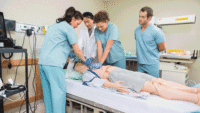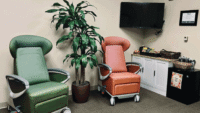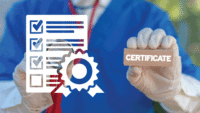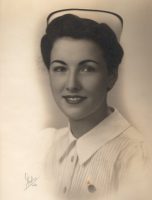A dedicated new nurse council aids retention.
Takeaways:
- High nurse turnover comes with costs that are great both to the nursing talent pool and to the financial resources of an institution.
- Novice nurses experience the greatest risk of turnover.
- It behooves administrators to develop creative strategies for supporting novice nurses, such as establishing of a New Nurse Council.
Recent dramatic increases in nurse turnover have exacerbated the already existing critical shortage of nurses, contributing to a decrease in patient care quality. According to Becker’s Hospital Review, costs to replace each nurse range from $28,400 to $51,700, depending on the specialty. A hospital with a high turnover rate can easily find itself with a financial burden of several million dollars a year.
The Nursing Solutions Inc. 2022 NSI National Health Care Retention & RN Staffing Report noted turnover rates of 31.7% for novice nurses within the first year of employment. According to Benner’s Novice to Expert theory, a novice nurse doesn’t reach the proficient stage until they have about 3 years of clinical practice. Many new nurses experience a shock when transitioning from student to professional nurse because the lived experience of the job isn’t what they expected in school. The complex workplace presents new challenges, including practice changes, stress, and anxiety. Other factors contributing to new nurse attrition include low job satisfaction, perceived high workload, compassion fatigue, incivility, negative mood, and role-transition pressures. The COVID-19 pandemic magnified these challenges in ways that we’re still discovering.
New nurses can’t be expected to navigate these challenges on their own. Healthcare leaders must help them by developing innovative strategies that offer guidance. Hackensack University Medical Center (HUMC), a 781-bed academic hospital in northern New Jersey, chose to address new nurse turnover via its nurse residency program and a new nurse council.
Look to theory
HUMC turned to Jean Watson’s Theory of Human Caring, which promotes the importance of individuals taking care of themselves as well as others. The pandemic has contributed to increased anxiety and fear among many recent graduates as they transition into their professional role. Peer and management support can help build the resilience needed to successfully navigate this transition. Establishing a New Nurse Council as part of an organizational effort can provide the support needed to mitigate the stressors novice nurses experience. The New Nurse Council also aligns with the American Nurses Association Nursing Scope and Standards of Practice.
Build a foundation
In November 2020, HUMC established a New Nurse Council as an offshoot of the hospital’s Recruitment, Retention, and Mentoring council, which was developed in 2008. The New Nurse Council, an innovative application of evidence-based strategies within a shared governance model, aims to support the transition of new nurses into practice, foster a culture of engagement and inclusiveness, and improve retention rates.
Two months after the council began, the hospital’s nurse residency program started requiring council membership for all new nurse hires. Initially, new nurses were expected to attend 50% of New Nurse Council meetings during their yearlong residency. In 2021, human resources hired 138 new nurse residents, of which 60 consistently attended the monthly council meetings. In January 2022, to address concerns about overburdening residents with time commitments and to foster engagement in other councils and department activities, attendance requirements decreased from 50% to 30%.
New Nurse Council recruitment also occurred via advertising in the hospital’s weekly electronic newsletter sent to approximately 2,000 nurses and word of mouth among members of the same hiring cohorts. To ensure that nurse managers understood and respected the time commitment to the new nurse council, members of the New Nurse Council team discussed its purpose at the hospital-wide nurse managers council. Subsequently, nurse managers encouraged new hires to attend new nurse council meetings.
Establish a structure
A chair and co-chair, each with less than 4 years of nursing experience, lead the New Nurse Council. Volunteers for the inaugural chair positions were selected and mentored by Recruitment, Retention, and Mentoring council leaders. A subsequent co-chair replacement was found from within the New Nurse Council membership. A senior nurse representative from the Recruitment, Retention, and Mentoring council attends the New Nurse Council in an advisory and supportive role. Monthly virtual meetings serve as a forum for new nurse questions and concerns. Hybrid in-person/virtual meetings will begin by the end of 2022.
Team leaders engage guest speakers to educate new nurses on self-care and professional transition. Speakers include council chairs, team members, administrators, and senior nurses. The hospital’s chief nursing officer attended one of the meetings to offer her support and assistance, and she has met separately with leadership on several occasions. The council uses journal club articles and podcast discussions to facilitate dialogue. Podcasts are selected to appeal to the largely millennial nurses in the group. The council continues to encourage professional advancement, including specialty certifications and the organization’s clinical advancement program.
Create content
New nurses shared their learning needs and topics of interest via anonymous surveys. The council co-chairs used data from the surveys to create monthly agendas. Agenda items for 2021 included the following:
- January—How to use the peer-to-peer employee recognition tool, clinical advancement program, hospital-wide councils, and mentoring
- February—Journal club member-led discussion about the “Support for Early Career Nurse” podcast
- March—Specialty certifications and financial incentives
- April—Wellness incentive program and how to choose a council to join
- June—Policy searching on the intranet and discussion about the “Nurse Bullies and Professional Incivility” podcast
- July—Specialty certification process, mentoring, floating policy, and discussion about the “Learning How to Delegate as a New Nurse” podcast
- September—Paid time off and holiday policy, self-scheduling online, wellness incentive program, and clinical advancement program requirements and deadlines
- October—Discussion on safety room checks and equipment at bedsides
- November—Hospital employee benefits and using educational resources provided on the intranet
- December—Self-evaluation tips for annual employee review
As an organization that’s achieved American Nurses Credentialing Center Magnet® designation six times, council activities focus on improving outcomes and care delivery. (See The Magnet® connection.)
The Magnet® connection
In 1995, Hackensack University Medical Center (HUMC) became one of the first organizations to obtain Magnet® designation from the American Nurses Credentialing Center. In 2019, HUMC celebrated its sixth designation and today continues on its Magnet journey. The New Nurse Council embodies HUMC’s priority for sustaining a culture of nursing excellence using Magnet model components:
- Transformational Leadership. New nurses are guided to effectively communicate and advocate for patients and fellow team members.
- Structural Empowerment. The council provides a formal place for nurses to engage in the organization’s shared decision-making structure.
- Exemplary Professional Practice. The council integrates the organization’s mission, vision, and professional practice model to support care delivery.
- New Knowledge, Innovations, and Improvements. The council provides education supported by evidence-based practices and guides new nurses in using available resources to engage in practice changes. In addition, council leaders support an innovative design focused on strengthening the nursing team and disseminating information to improve teams within and outside of the organization.
- Empirical Outcomes. Upon implementation of this council, the team identified outcomes to support and evaluate the project, which will continue.
Study the outcomes
To evaluate the effectiveness of the New Nurse Council at increasing retention and decreasing staff turnover rates, council leadership and the hospital’s nursing research and practice department planned an evidence-based project. In a retrospective data analysis, they compared the overall retention rates for new nurses at HUMC from January through December 2021 with the reported retention rates at the other 16 hospitals in the network. Data also were compared with state and national benchmarks. The reported retention rates were 94% at HUMC, 93.4% in the network, 82.6% in New Jersey, and 83% nationally.
Limitations
Data collection was limited to a cross-sectional analysis. Concerns arose about comparing 2021 retention rates to those of previous years due to the effects of the pandemic. The negative effects of caring for patients with COVID-19 have been a major factor in increasing job dissatisfaction and nurses’ intent to leave their organizations or even the profession. Comparing 2021’s cohort of new nurses with those who started in 2020 under the burden of COVID-19 may be inappropriate.
Implications
This project supports using innovative initiatives, such as the New Nurse Council, to help new nurses develop professional resilience. Leadership can enhance these results by encouraging the council as it continues to grow and evolve. To determine if the resilience fostered through the council will endure, further research is warranted to assess the number of New Nurse Council members who continue to work in the organization at the 2- and 3-year marks.
Additional research also can explore the number of New Nurse Council members who achieve specialty certification or apply to the clinical advancement program 2 to 3 years into their employment. These actions indicate a commitment to the organization and the profession.
Recommendations
Based on the results of the study, the New Nurse Council should continue to use meetings to teach self-care strategies that foster resilience. The nurse managers council should continue to facilitate New Nurse Council attendance for their team members even after residency completion. Extending the nurse residency program and the New Nurse Council membership requirements from 12 months to 18 months may provide continued support, and the clinical advancement program can foster professional development within the organization.
Other recommendations include providing formal mentorship opportunities through the Recruitment, Retention, and Mentoring council and including those relationships in the next study analysis, expanding future studies to a larger sample size by including other system hospitals, comparing data by hospital size and location, and stratifying departments with turnover. To measure job satisfaction, pre- and post-intervention evaluations of the next cohort should be conducted using a validated assessment tool. In addition, HUMC should collaborate with other system hospitals to determine New Nurse Council best practices.
Foster resilience
Making the transition from student to professional nurse presents challenges in the best of circumstances, but the pandemic and other social issues have created even more. Healthcare leaders can mitigate these challenges by providing formal support systems that foster the resilience that new nurses need to succeed.
The authors work at Hackensack University Medical Center in Hackensack, New Jersey. Margaret Hopkins is a staff nurse. Jasmine Hossain-Wilson is a staff nurse. Ramonita Jimenez is vice president and chief nursing officer. Carolene Stephenson is a nurse scientist and advanced practice nurse/hospitalist. Kimberly Dimino is a nurse scientist. Bridget Wertz is co-Magnet program director. Jaime Avallone is a clinical education specialist.
Note from the author: The phrase “perceived high workload” references the research of Erin Wakefield, as cited at the end of this article. It is not so much the actual workload, but it is the stress and reality shock that come from having an idea of what this job will be like, and what it is really like. The authors in no way think that bedside nurses have an easy workload, having each been one either currently or at some time in their careers. -9/22/2022
References
American Nurses Credentialing Center. 2023 Magnet® Application Manual. Silver Spring, MD: ANA Enterprise; 2021.
Austin C, Halpin Y. Evaluation of a personal professional mentor scheme for newly qualified nurses. Br J Nurs. 2021;30(11):672-6. doi:10.12968/bjon.2021.30.11.672
Benner P. From Novice to Expert: Excellence and Power in Clinical Nursing Practice, Commemorative Edition. Menlo Park, CA: Pearson; 2000.
Blozen BB. Making the case for nursing specialty certification. Am Nurse Today. 2018;13(12):60-1.
Gunawan J, Aungsuroch Y, Watson J, Marzilli C. Nursing administration: Watson’s theory of human caring. Nurs Sci Q. 2022;35(2):235-43. doi:10.1177/08943184211070582
Lavoie-Tremblay M, Gélinas C, Aubé T, et al. Influence of caring for Covid-19 patients on nurse’s turnover, work satisfaction and quality of care. J Nurs Manag. 2022;30(1):33-43. doi:10.1111/jonm.13462
NSI Nursing Solutions. 2022 NSI National Healthcare Retention & RN Staffing Report. March 2022.
Plescia M. The cost of nurse turnover by the numbers. Becker’s Hospital Review. October 14, 2021.
Sherman RO, Labat AM. Managing new nurse fear and anxiety. Am Nurse J. 2021;16(4):37-9.
Wakefield E. Is your graduate nurse suffering from transition shock? J Perioper Nurs. 2018;31(1):46-50. doi:10.26550/2209-1092.1024
Waltz LA, Muñoz L, Weber Johnson H, Rodriguez T. Exploring job satisfaction and workplace engagement in millennial nurses. J Nurs Manag. 2020;28(3):673-81. doi:10.1111/jonm.12981
Key words: Novice nurse, Magnet®, resilience, retention



















9 Comments. Leave new
We instituted a program where a preceptor is paired with a nursing student during the break between their Junior and Senior years. The nursing student is hired as a CNA, but works solely with their preceptor with the intent that they will learn not only the hands-on skills required of a nurse, but also how experienced nurses think and plan. During the school year, they are required to work with the preceptor one shift each month, and the expectation is that they will have the same preceptor for the final clinical of nursing school. We have found that these students are much more comfortable in the role of new graduate nurse, have a shorter orientation time requirement, and are more likely to remain employed with us.
I find the statement about perceived high workload belittling. A lot of the nursing jobs have high workloads. It’s not perceived. It’s a fact. No time for bathroom breaks or lunch. That is not perceived…
In no way was it meant to belittle the very real workload nurses have. The article was referencing the research that shows it is the change in perception causing the stress more than the work itself.
Thank you Ann! I thought the same thing. Here’s what I believe: No amount of “councils” will keep these nurses at the bedside when they are consistently taking an unsafe number of patients. They can run from the real problem as long as they want, but they are allowing patient care to continue to deteriorate while they say things like “perceived” and “councils,” neither of which will produce an answer. I am “perceiving” nurses taking eight patients on the day shift and that is a fact. They are exhausted while everyone turns their back to them.
“Percieved” high workload? This is rediculous as it is not just percieved. It is REAL! Oh, our answer is to give nurses more stuff to pack in their schedules. You would have more luck if you hired nuns who have no expectation of families or outside life.
None of us think the work load is not real. The research shows that it is the change in perception from student to new nurse that is causing the stress.
I am a diploma trained nurse from the West Indies. The acclimatization to the ward/unit occurred in gradual stages. The students had the opportunities at different stages of their training to become familiar, and gain autonomy during the process. In addition to the new nurse council propose, I would like to suggest nurse internship ( similar to physician interns) of the new graduate, with a preceptor or under the guidance of an RN. Other alternative may be for the schools to allow more on the job training in addition to educational content. Estucia de Verteuil, RN, MSN, MPA
Gradual stages is an interesting concept. More time in hospitals while still students would certainly help.
I very much agree with this suggestion. Unfortunately, it seems that orientation periods are being cut short. I have heard repeatedly that this is because of the staffing issues faced by the departments; perhaps it’s time we run a root cause analysis on the real reason our nurses are leaving the bedside.
I know why I left, “perception” had nothing to do with it. It was the real risk of losing my license the day I was the only RN in the building of a 238-bed facility with no supervisor, unit manager, or charge nurse on shift for 16+ hours.